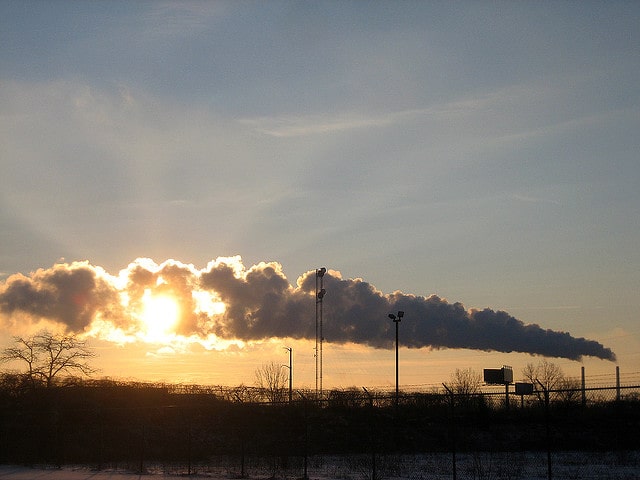Various Causes and Effects of Smog
Smog simply refers to a mixture of liquid and solid fog and smoke particles. Smog is usually seen as yellowish or blackish fog which suspends in the atmosphere or forms a ceiling in the air. It happens when fume, emissions, and particulates – nitrogen and sulfur oxides and volatile organic compounds – react in the presence of sunlight to form ground-level ozone.
Waste incinerators, burning of coal and vehicular and industrial emissions are the main gasses that form smog when acted upon by the sun’s ultraviolet light together with particulate matter and volatile organic compounds. Dense urban areas suffer more from smog because of huge numbers of traffic, industries, and combustion of different types of fuel. Smog has serious negative effects on people, plants, and animals.
Below are the leading causes and effects.
Causes of Smog
Smog-forming pollutants from numerous sources such as factories, consumer products, or vehicles are the typical causative factors of smog. In most urban areas, more than 50% of smog is formed in consequence of vehicular emissions. Mostly, the occurrences of smog are associated with the relationship between weather patterns and heavy motor vehicle traffic, industrial and other consumer product emissions.
Smog is of two types: photochemical smog – commonly formed in urban areas and originates from elevated levels of hydrocarbon vapors and nitrogen oxides in the presence of sunlight, and sulfur smog – formed when there is an increased level of sulfur oxides in the atmosphere.
Below are the main causes of Smog.
- Coal
Use of coal as fuel in heating or in power-producing plants discharges high concentrations of sulfur oxides in the atmosphere. The effects are worsened by high levels of suspended particulate matter in the air and dampness. Burning coal also generates significant amounts of smoke which lead to smoggy environments. Coal induced smog has been widely experienced in London up to the middle ages of the 20th century. In China, Harbin, coal-induced smog contributed to the closure of roads, schools, and airport in the autumn of 2013.
- Vehicular and Industrial Emissions
Emissions from the transportation sector because of fossil fuel combustion in cars, trucks, buses, motorbikes, and boats are chief contributors to smog formation. Industries equally emit scores of gaseous emissions and fumes which leads to smog formation. Most of the smog formed in large cities are as a result of traffic emissions.
The primary precursors are oxides of nitrogen, volatile organic compounds, carbon monoxide, fumes, sulfur oxides, and hydrocarbons. These substances react with moisture, heat, sunlight, and ammonia among other compounds to form the toxic vapors, particulates, and ground level ozone that make up smog.
- Natural Causes
Smog can as well occur due to natural causes like volcanic eruption and some specific plant life effects. Volcanic eruption discharges high concentrations of sulfur dioxide and particulate matter in the air, the two primary constituents for smog formation. Radiocarbon amounts of some specific plant life are believed to cause smog in some locations. For instance, the Los Angeles creosote bush is linked to smog occurrences in the area.
Effects of Smog
- Effects on Human Health
Smog is composed of a mixture of air pollutants which can endanger human health. Various human health problems such as emphysema, asthma, chronic bronchitis, lung infections, and cancers are caused or exacerbated by the effects of smog. The effects include:
- Coughing and irritation of the eyes, chest, nose and throat: High ozone levels can irritate the respiratory system leading to coughing and wheezing. These effects generally last for only a few days after exposure, but the particles in the smog can continue to damage the lungs even after the irritations disappear.
- Aggravation of asthma: Asthma conditions are severely worsened by smog and can trigger asthma attacks.
- Breathing difficulties and lung damage: Bronchitis, pneumonia, and emphysema are some of the lung conditions linked to the effects of smog as it damages the lining of the lungs. Smog also makes it difficult for people to breathe properly.
- Premature deaths because of respiratory and cancer diseases: A 2013 WHO report indicated that cumulative exposure to smog heightens the chances of premature death from cancers and respiratory diseases. Thousands of premature deaths in the United States, Europe, and Asian countries are linked to inhalation of smog particles. Such chemical particles include benzene, formaldehyde, and butadiene which are all comprised of cancer-causing carcinogens.
- Birth defects and low birth weights: Smog is highly linked to birth defects and low birth weight. Pregnant women who have been exposed to smog have had babies with birth defects. Spina bifida – a condition depicting malformations of the spinal column, and anencephaly – underdevelopment or absence, or only part of the brain, are birth defects associated with smog exposure. Furthermore, studies suggest that even as low as 5 μg exposure to smog particulate matter can result in risks of very low birth weights at delivery.
- The risk of developing rickets: Heavy smog that lasts for prolonged periods blocks UV rays from reaching the earth surface. This results in low production of Vitamin D leading to rickets due to impaired metabolism of calcium and phosphorus in the bone marrow.
- Risks of road accidents or even plane crash: Smog interferes with natural visibility and irritates the eyes. On this basis, it may prevent the driver or flight controller from reading important signs or signals thereby increasing the probability of road accidents or even plane crash.
- Implications for Plants and Animals
Smog inhibits the growth of plants and can lead to extensive damage to crops, trees, and vegetation. When crops and vegetables such as wheat, soybeans, tomatoes, peanuts, cotton and kales are exposed to smog, it interferes with their ability to fight infections thus increasing susceptability to diseases.
The smog’s impact of altering the natural environment makes it difficult for animals to adapt or survive in such toxic conditions, which can kill countless animal species or make them susceptible to illness. Photochemical smog caused when nitrogen oxides react in the presence of sunlight, is established to destroy plant life and irritate sensitive tissues of both plants and animals.
Photo by: Tod baker






